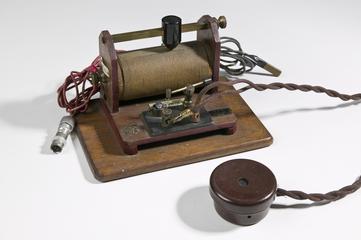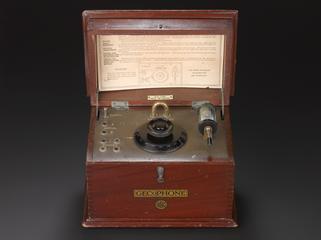
Radio receiver made for Brighton Borough Police, 1933-1939
Radio receiver made for Brighton Borough Police, made by the Wireless Telephone Company Limited, British, 1933-1939. Bakelite-case single-valve receiver marked 'no. 1'
More
Radio receiver made for Brighton Borough Police, made by the Wireless Telephone Company Limited, British, 1933-1939. Bakelite-case single-valve receiver marked 'no. 1'.
Brighton Borough Police were early pioneers of police radio systems when they adopted these single-valve pocket radio receivers for communication. The receivers themselves worked well, but there were limitations that made widespread development impossible. Brighton shared a channel with Glasgow, meaning that occasionally policemen in Brighton would receive interesting but completely useless messages meant for their colleagues in Glasgow. Thirty of the sets were in daily use. Because of the risk of transmissions being picked up by amateur radio users, a code was developed: burglary was brick, fraud was frog, murder was monk, and so on. Policemen were given cards with these codes on. Because the radios could only receive calls, officers were sent messages telling them to go to the nearest call box and ring the station. The sets remained in use until the start of the Second World War, when the wavelength they operated on was withdrawn.
- Measurements:
-
overall: 165 mm x 120 mm x 35 mm, .42 kg
- Materials:
- bakelite and metal (unknown)
- Object Number:
- 1983-1254/1
- type:
- radio receiver
- Image ©
- The Board of Trustees of the Science Musuem






